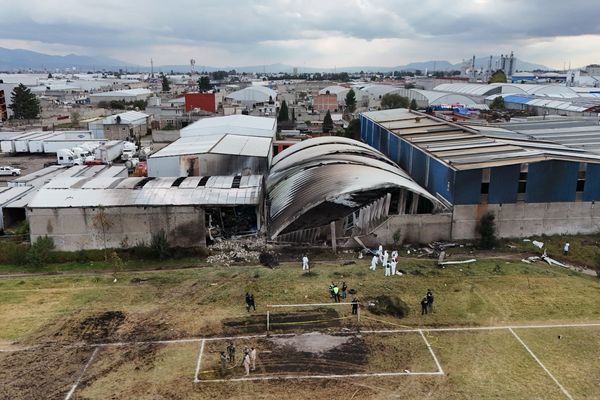
You fix things around the house to save money. It feels good to handle repairs yourself. But have you ever wondered if your DIY fixes would pass an insurance inspection? Many homeowners don’t realize that some repairs, even if they work, might not meet insurance standards. If your home ever needs to be inspected for a claim or policy renewal, these fixes could cost you. Insurance companies look for safety, code compliance, and quality. If your repairs don’t measure up, you could face denied claims or higher premiums. Here’s what you need to know about common DIY fixes that might fail an insurance inspection.
1. Electrical Work Without a Permit
Electrical repairs are tempting to handle yourself. Swapping out a light fixture or adding an outlet seems simple. But insurance inspectors look for proper permits and code compliance. If you’ve done electrical work without a license, it’s a red flag. Faulty wiring is a leading cause of house fires. Inspectors want to see that a licensed electrician did the work or that you followed local codes. If you can’t show proof, your insurance company might deny a claim after a fire. Always check your local requirements before touching electrical systems.
2. Plumbing Repairs Using Temporary Fixes
A leaky pipe is annoying. Grabbing some tape or a clamp feels like a quick win. But temporary plumbing fixes don’t last. Insurance inspectors look for permanent, code-compliant repairs. If you use rubber patches, duct tape, or makeshift seals, you risk leaks and water damage. Water damage claims are expensive, and insurers want to see solid repairs. If your fix fails and causes a flood, your claim could be denied. Use proper fittings and materials, or call a plumber for anything beyond a simple clog.
3. Roof Patching With Nonstandard Materials
A missing shingle or small leak on the roof is easy to ignore. Some people use tarps, caulk, or even sheet metal as a quick patch. These fixes might keep water out for a while, but they don’t meet building codes. Insurance inspectors check for proper roofing materials and installation. If your patch job fails, water can seep in and cause mold or structural damage. Insurers may refuse to pay for repairs if they find nonstandard materials. Always use approved roofing products and follow the manufacturer’s instructions.
4. Unpermitted Room Additions
Adding a bedroom or finishing a basement can add value to your home. But if you skip the permit process, you’re asking for trouble. Insurance companies want to know that all living spaces meet safety codes. Unpermitted additions might have hidden problems—bad wiring, poor insulation, or weak structures. Inspectors will look for permits and may ask for proof of inspections. If you can’t provide them, your insurance might not cover damage in those areas. Always get the right permits before starting big projects.
5. DIY Window and Door Installations
Replacing windows or doors seems easy. But if you don’t install them correctly, you can create gaps, leaks, or security risks. Insurance inspectors check for proper seals and secure locks. Poorly installed windows can let in water, leading to rot and mold. Doors that don’t close properly can be a security issue. If a break-in or water damage happens because of a bad installation, your claim could be denied. Follow the manufacturer’s instructions and use the right tools. If you’re unsure, hire a pro.
6. Improperly Installed Water Heaters
Water heaters are heavy and can be dangerous if not installed correctly. Some homeowners try to save money by installing them without following the code. Inspectors look for proper venting, seismic straps, and safe connections. A poorly installed water heater can leak gas, cause fires, or even explode. Insurance companies want to see that your water heater is safe and up to code. If it’s not, you could be on the hook for damages. Always follow local codes or hire a licensed plumber.
7. Decks and Porches Without Proper Footings
Building a deck or porch is a popular DIY project. But if you skip the right footings or use the wrong materials, it can be unsafe. Inspectors check for solid foundations, proper railings, and safe stairs. A wobbly deck is a liability. If someone gets hurt, your insurance might not cover it. Use pressure-treated lumber, follow local codes, and make sure your deck is anchored well.
8. Homemade Security Systems
Security matters, but not all DIY systems are equal. Some people install cameras or alarms without following best practices. Insurance companies may offer discounts for approved systems, but homemade setups might not qualify. Inspectors look for UL-listed equipment and professional installation. If your system fails during a break-in, your claim could be denied. Use approved products and consider professional monitoring for peace of mind.
9. Painting Over Mold or Water Damage
It’s tempting to paint over stains or mold to make things look better. But inspectors know what to look for. Covering up damage doesn’t fix the problem. Mold can cause health issues and spread behind walls. Insurance companies want to see that you fixed the source of the problem, not just the surface. If you file a claim for water damage and they find hidden mold, you could be denied. Always address the root cause before painting.
10. Flooring Installed Over Old Damage
Laying new flooring can hide a lot of water damage, rot, or uneven surfaces. But insurance inspectors check for solid subfloors and proper installation. If you cover up problems, you risk bigger issues later. Claims for damaged floors might be denied if the inspector finds you hid old damage. Always repair the base before installing new floors.
Why Insurance Inspections Catch DIY Mistakes
Insurance inspections aren’t just about rules. They protect you and your home. DIY fixes can save money, but if they don’t meet code, you could lose coverage or face denied claims. Take time to do things right. When in doubt, ask a pro or check your local codes. Your home—and your wallet—will thank you.
Have you ever had a DIY fix questioned during an insurance inspection? Share your story in the comments.
Read More
How do you reduce your home insurance premiums?
Save some cash by avoiding these home buying mistakes
The post How Many DIY Fixes in Your Home Would Fail an Insurance Inspection? appeared first on Clever Dude Personal Finance & Money.







